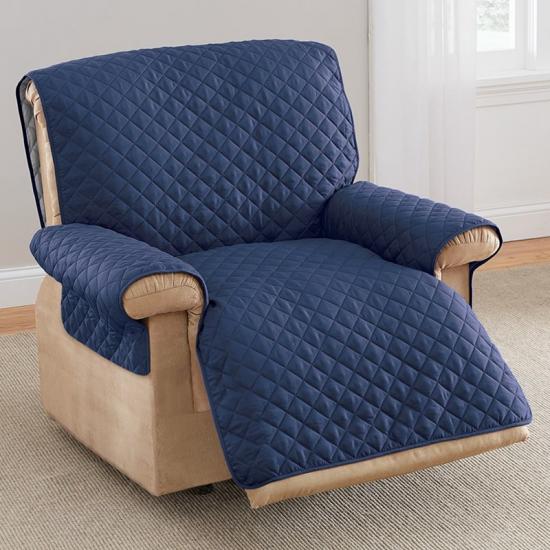The choice of microfiber composition significantly impacts the performance and comfort of quilted sofa covers in several ways:
1. Material Type:
Polyester vs. Nylon: Most microfiber is made from polyester, which is known for its durability, stain resistance, and affordability. Nylon, while generally stronger and more elastic, can be more expensive. Polyester microfiber tends to be softer and warmer, enhancing comfort, while nylon can provide a smoother, more breathable surface.
2. Softness and Comfort:
Fiber Density: The density and fineness of the fibers used in the composition affect the tactile feel of the fabric. Finer fibers generally yield a softer and more luxurious feel, enhancing comfort when sitting or lying on the sofa cover.
Loft and Padding: The composition of the microfiber, especially in quilted designs, contributes to the loft or thickness of the fabric. A thicker, well-padded microfiber cover can provide better cushioning, improving overall comfort.
3. Durability and Longevity:
Abrasion Resistance: Different microfiber compositions have varying levels of abrasion resistance. Higher-quality polyester microfibers tend to withstand wear and tear better, extending the life of the sofa cover, while lower-quality options may show signs of pilling or fraying more quickly.
Tensile Strength: The tensile strength of the fibers affects how well the quilted cover holds up under stress. Stronger fibers help prevent tearing and stretching, maintaining the cover's shape and fit over time.
4. Stain and Water Resistance:
Treatment Options: Some microfiber compositions come with additional treatments for enhanced stain and water resistance. These treatments can help repel liquids and prevent stains from setting, making the covers easier to clean and maintain.
Ease of Cleaning: Microfiber is generally easier to clean than natural fibers, but the specific composition can affect how resistant the fabric is to staining and how well it holds up to washing and cleaning methods.

5. Breathability:
Moisture Management: Different microfiber compositions can affect breathability. For example, polyester microfiber tends to retain heat, which might be uncomfortable in warm climates. Choosing a microfiber with better moisture-wicking properties can improve breathability and comfort.
Airflow: A composition that incorporates a blend of fibers or a looser weave can enhance airflow, making the quilted sofa cover more comfortable in various temperatures.
6. Aesthetic Appeal:
Finish and Texture: The choice of microfiber composition can influence the overall appearance and texture of the quilted sofa cover. Some compositions can be treated to have a sheen or matte finish, impacting the look and feel of the fabric.
Color Retention: High-quality microfiber retains dye better, ensuring that colors remain vibrant and resist fading over time, which is particularly important for aesthetic appeal in home decor.
7. Environmental Impact:
Sustainability: The sourcing of microfiber also plays a role in its environmental footprint. Recycled polyester microfiber options may provide a more sustainable choice while still maintaining performance and comfort.
The choice of microfiber composition for quilted sofa covers affects comfort, durability, stain resistance, breathability, and aesthetic appeal. Selecting the right composition can enhance both the functional and visual qualities of the sofa cover, making it a more suitable choice for specific consumer needs and preferences.















.jpg?imageView2/2/format/jp2)
.jpg?imageView2/2/format/jp2)
.jpg?imageView2/2/format/jp2)
.jpg?imageView2/2/format/jp2)
.jpg?imageView2/2/format/jp2)
.jpg?imageView2/2/format/jp2)
.jpg?imageView2/2/format/jp2)

.jpg?imageView2/2/format/jp2)